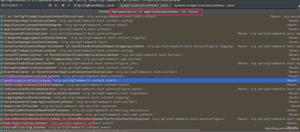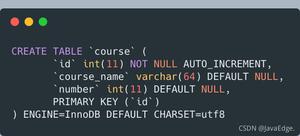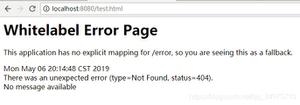Spring事务管理方法步骤解析
1、Spring的事务管理主要包括3个接口
TransactionDefinition:封装事务的隔离级别,超时时间,是否为只读事务和事务的传播规则等事务属性,可通过XML配置具体信息。
PlatformTransactionManager:根据TransactionDefinition提供的事务属性配置信息,创建事务。
TransactionStatus:封装了事务的具体运行状态。比如,是否是新开启事务,是否已经提交事务,设置当前事务为rollback-only等。
2、Spring的事务管理:
1、PlatformTransactionManager:接口统一,抽取处理事务操作相关的方法;
(1):TransactionStatus getTransaction(TransactionDefinition definition): 根据事务定义信息从事务环境中返回一个已存在的事务,或者创建一个新的事务,并用TransactionStatus描述该事务的状态。
(2):void commit(TransactionStatus status): 根据事务的状态提交事务,如果事务状态已经标识为rollback-only,该方法执行回滚事务的操作。
(3):void rollback(TransactionStatus status): 将事务回滚,当commit方法抛出异常时,rollback会被隐式调用
2、在使用spring管理事务的时候,首先得告诉spring使用哪一个事务管理器;
3、常用的事务管理器:
DataSourceTransactionManager:使用JDBC,MyBatis的事务管理器;
HibernateTransactionManager:使用Hibernate的事务管理器;
3、步骤
第一步:配置Spring的事务管理器(需要用的dataSource)
第二步:配置事务
<?xml version="1.0" encoding="UTF-8"?>
<beans xmlns="http://www.springframework.org/schema/beans"
xmlns:xsi="http://www.w3.org/2001/XMLSchema-instance"
xmlns:context="http://www.springframework.org/schema/context"
xmlns:aop="http://www.springframework.org/schema/aop"
xmlns:tx="http://www.springframework.org/schema/tx"
xsi:schemaLocation="http://www.springframework.org/schema/beans
http://www.springframework.org/schema/beans/spring-beans.xsd
http://www.springframework.org/schema/context
http://www.springframework.org/schema/context/spring-context.xsd
http://www.springframework.org/schema/aop
http://www.springframework.org/schema/aop/spring-aop.xsd
http://www.springframework.org/schema/tx
http://www.springframework.org/schema/tx/spring-tx.xsd">
<context:property-placeholder location="classpath:db.properties" system-properties-mode="NEVER"/>
<bean id="dataSource" class="com.alibaba.druid.pool.DruidDataSource">
<property name="driverClassName" value="${jdbc.driverClassName}"/>
<property name="url" value="${jdbc.url}"/>
<property name="username" value="${jdbc.username}"/>
<property name="password" value="${jdbc.password}"/>
</bean>
<bean id="service" class="com.test.tx.service.impl.AccountServiceImpl">
<property name="accountDao" ref="accountDao"/>
</bean>
<bean id="accountDao" class="com.test.tx.dao.impl.AccountDaoImpl">
<property name="dataSource" ref="dataSource"/>
</bean>
<!--事务管理器-->
<bean id="manager" class="org.springframework.jdbc.datasource.DataSourceTransactionManager">
<property name="dataSource" ref="dataSource"/>
</bean>
<!--配置事务-->
<aop:config>
<!--配置切入点,这里写自己想要使用Spring事务管理的类或接口,在上篇博客中有切入点配置方法-->
<aop:pointcut id="pointcut" expression="execution( * com.test.tx.service.IAccountService.*(..))"/>
<!--配置切面-->
<aop:advisor advice-ref="advice" pointcut-ref="pointcut"/>
</aop:config>
<!--事务增强器-->
<tx:advice id="advice" transaction-manager="manager">
<tx:attributes>
<!--read-only可以将查询的方法设为只读事务-->
<tx:method name="*" read-only="false"/>
</tx:attributes>
</tx:advice>
</beans>
第三步:进行事务的测试
4、事务的注解配置方式
第一步:加载驱动
<!--事务的注解驱动,注解解析器需要关联事务管理器-->
<tx:annotation-driven transaction-manager="manager"/>
第二步:在实现类上添加注解@Transactional注解中相应的属性可以配置事务控制的相关细节(隔离级别/传播规则/是否只读等)
类中的方法也可以添加@Transactional注解,同样可以对方法进行细节配置,方法中的配置信息会覆盖类中的同名配置。
以上是 Spring事务管理方法步骤解析 的全部内容, 来源链接: utcz.com/z/328364.html









